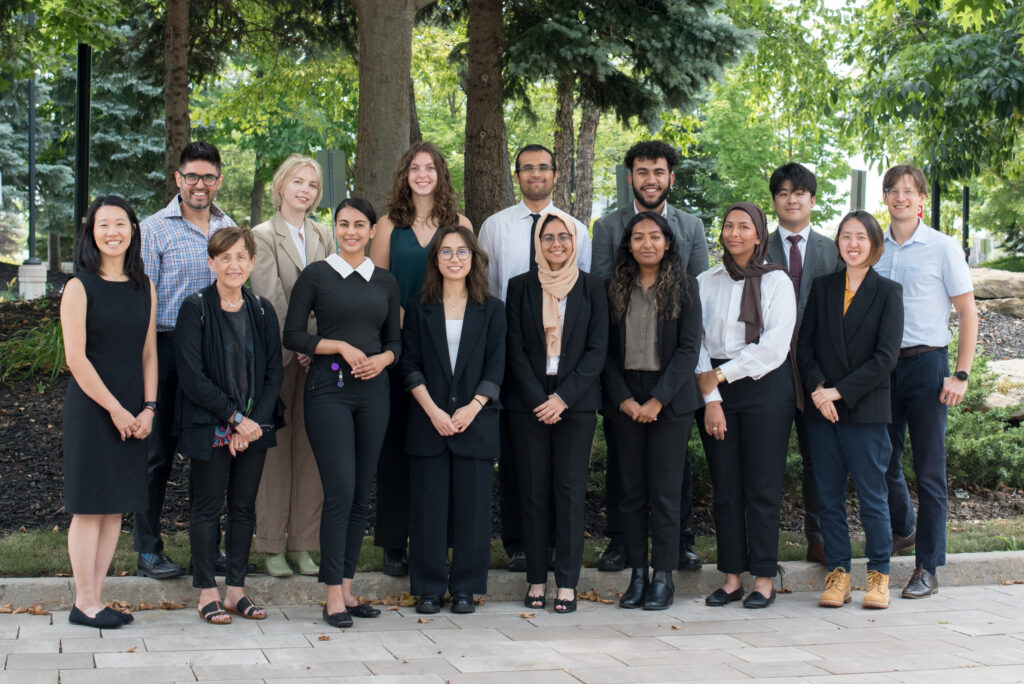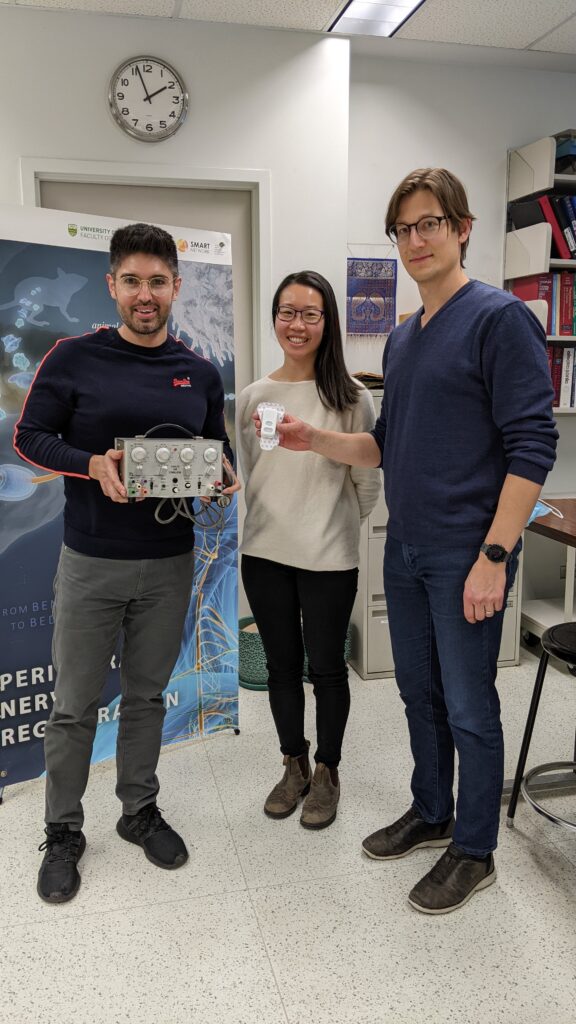Ontario medical startup, Epineuron, speeds up nerve regeneration after serious injuries

The first time Epineuron’s co-founder used a new nerve regeneration therapy in a public setting, it had an outcome that no one expected.
A seven-year-old girl had nearly lost her leg in a boating accident. She was rushed to SickKids Hospital in Toronto and the surgeons were able to save her leg. However, there was risk that if she didn’t regain enough nerve function, it would be better to amputate.
Luckily, at the time, pioneering neuroscientist Dr. Tessa Gordon was launching a nerve research unit with Dr. Gregory Borschel at SickKids and a new therapy solution was available.
The therapy revitalized damaged nerves with targeted electrical stimulation for a duration of one hour. It was a low-risk option for the potential of long-term gain. Epineuron’s Co-Founder, Dr. Mike Willand, was a post-doctoral fellow at the hospital and worked with surgical staff to treat the young girl. A year-and-a-half later, the girl had recovered most of the functionality in her leg.
Epineuron Co-Founder and CEO Sergio D. Aguirre noted that this amount of recovery is very unusual. “Even though being young you can regenerate better, no one anticipated this degree of recovery this early.”
Another couple of years later and the girl had regained functionality in her injured leg to the point that you wouldn’t have guessed she had experienced that boating accident.

Epineuron’s founders knew this therapy was something groundbreaking, and decided to further the research and make it easier for doctors to access.
Now, they are in the midst of clinical trials to bring their product to market. Epineuron has created a wearable device that combines cutting-edge advances in neuroscience, surgery, and biomedical engineering. The device, PeriPulse, uses electrical stimulation to “supercharge” the regeneration of damaged peripheral nerves. Peripheral nerves send messages from the brain and spinal cord to the rest of the body. They are integral for sensation in limbs and moving the body’s muscles.
Studies on electrical stimulation have shown that it has the potential to be quite effective. One paper in the journal Frontiers in Neurology found that typical treatment for damaged peripheral nerves (often caused by traumatic injuries) is mainly surgical and less than half the patents recover satisfactory motor and sensory function while one-third have little to no recovery despite proper surgery.
This is due in part, the paper says, to a lack of systematic rehabilitation after surgery. Therapy like Epineuron’s has the potential to promote early-stage nerve regeneration, which is important for long-term recovery. Epineuron’s device provides treatment during ongoing nerve repair surgeries.
Epineuron is currently running a clinical trial with hospitals in the United States and Canada. Epineuron’s technology has been designated an FDA Breakthrough Device for the treatment of injured peripheral nerves. The Breakthrough Devices Program is meant to speed up development, assessment, and review towards FDA approvals for innovative technologies that have the potential to help patients. Epineuron was one of the first Canadian companies to receive this designation, and claims its trial is currently the largest medical device study for nerve regeneration.
To support its efforts, Epineuron has raised around $10 million in equity and non-dilutive capital. The Ontario Centre of Innovation (OCI) took part in the startup’s seed round of $1.5 million through the Ready 4 Market (R4M) fund. Through R4M, one of Ontario’s leading pre-seed investment funds, OCI aims to de-risk the investment opportunity and help attract private sector investors, and follow-on financing. Aguirre says that for Epineuron, the investment from R4M did just that.
“That first financing is one of the hardest to obtain,” he says, noting that OCI joining the funding round helped even more investors realize Epineuron might be a worthwhile opportunity.
“OCI is proud to support Ontario businesses like Epineuron, whose technology is accelerating recovery of nerve injury through electric stimulation,” says Manny Kalia, an OCI Investment Lead. “OCI takes pride in identifying and supporting high potential opportunities at early stage to accelerate the commercialization of Ontario made solutions. The success of Epineuron is playing a vital role in the creation of a vibrant life sciences ecosystem in Ontario.”
The science and technology for Epineuron’s device came from research being conducted at the University of Alberta. Willand, Epineuron’s Co-Founder and CTO, was putting the science to use as a Research Fellow at SickKids. When early uses went well, he and Aguirre knew that it would be important to make this therapy available to as many people as possible. Epineuron was born, and the co-founders developed a smaller version of the medical device – PeriPulse.
“This is going to make it easier for surgeons to … better meet the needs of dealing with traumatic injuries,” says Aguirre.
Alicia Pereira,
Director, Communications & Strategy
Media essentials including backgrounders, logos, photos and links to OCI publications.
Stay up-to-date with the latest OCI news and events right in your inbox!




